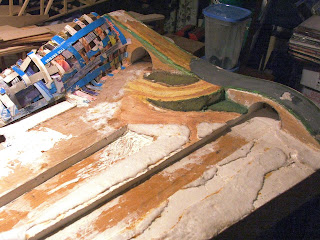I made these a long time ago. They started as you can see, from steamed pear, my favourite wood. The gates are made exactly as the real ones. I was lucky to see some being made at Tardebigge on the Worcester and Birmingham Canal.
I chose the pattern of lock furniture to be like that I'd seen on the Welsh Canal. Little riots of the founders' and early machinists' craft.
Brass master patterns were made and a colleague did me some sets of very fine castings of them. I have just enough to finish this job. Although, for some reason I have way more staggered tooth paddle racks than I need. Teeth are staggered to make slippage much less potentially catastrophic for the wooden paddle if they dropped suddenly.
With the lock gate parts are a wooden mooring stump, also made in steamed pear, with splits, rotten centre in the top and rope grooves and a fence panel, which will give a little privacy to the outside toilet door on the end of Tony Moss's garage office. This was made from steamed pear veneer, cut into slightly irregular strips and fixed to pear strip posts and battens.
That's it for a while, chaps. Off tomorrow to pick up bits for yet another Special, a Burlington Arrow, made of a Mk IV Triumph Spitfire, but that's for another time.

















































